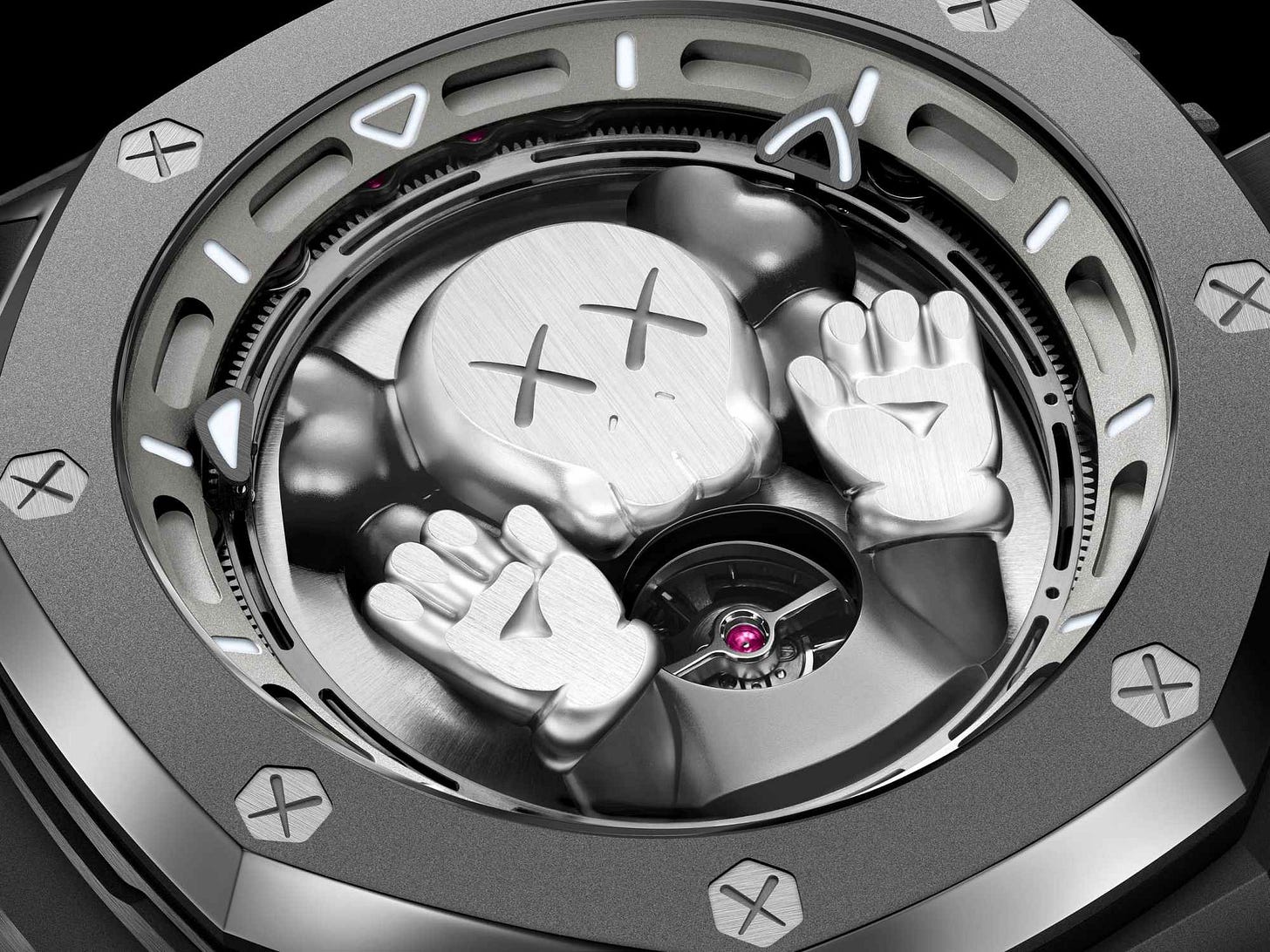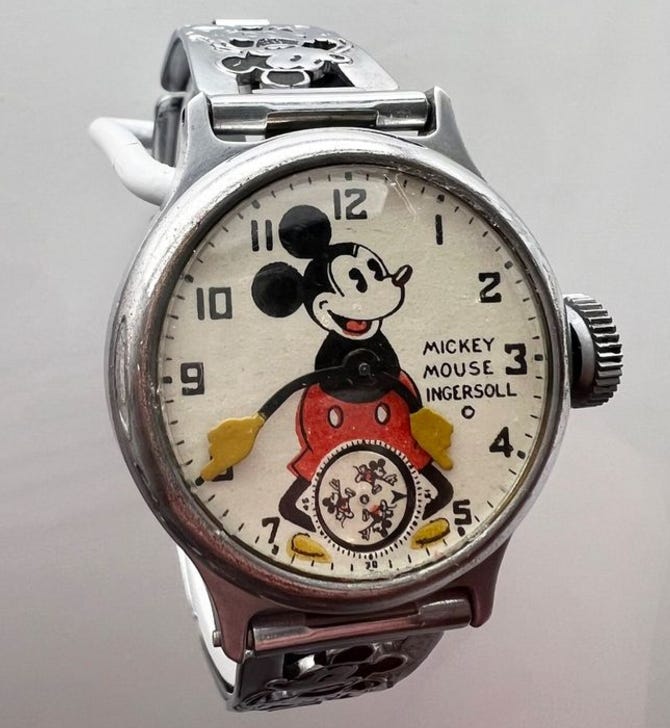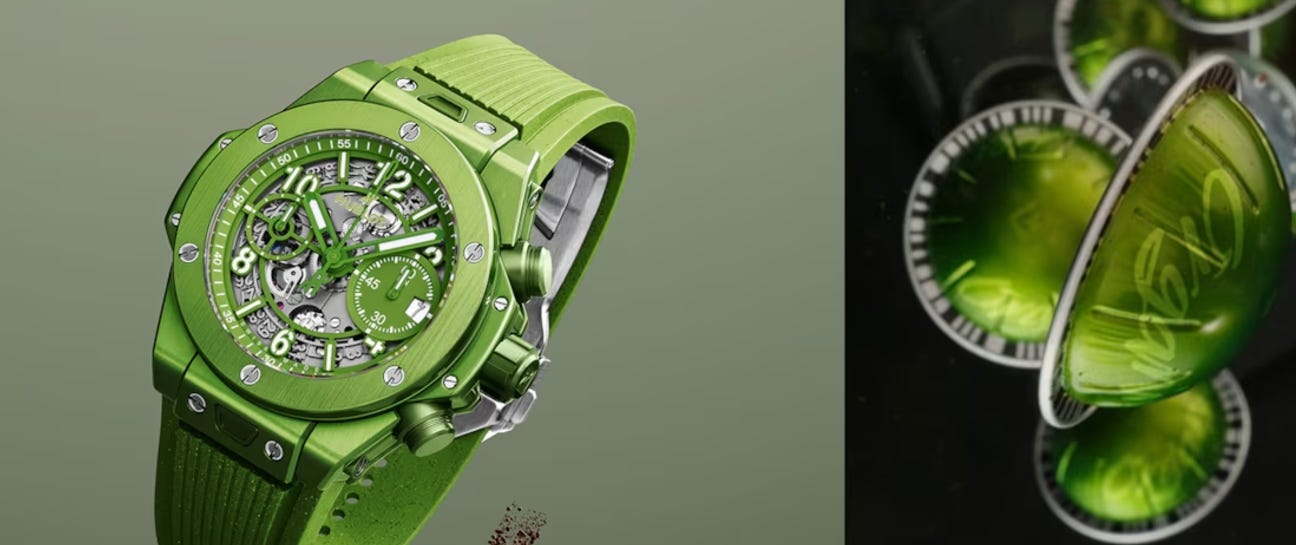Audemars Piguet's KAWS Collaboration
How a Swiss watchmaker traded 149 years of heritage for hype culture
So, Audemars Piguet (AP) just dropped another collaboration watch. This time they’ve let KAWS press his ‘Companion’ character against the crystal of a Royal Oak Concept Tourbillon. At CHF 200,000 (excl. VAT) and limited to 250 pieces, it’s about as exclusive as an Instagram influencer’s discount code.
Yes, this isn’t your grandfather’s AP anymore. The brand that once created some of horology’s greatest achievements now appears to be more interested in cartoon characters than chronometry - but is that all there is to it? While the traditionalists clutch their loupes in horror, let’s examine what’s really happening here.
Before we dive into the existential crisis of haute horology, let’s talk specs. The new Royal Oak Concept ‘Companion’ houses AP’s new calibre 2979, featuring a peripheral hour and minute display that cleverly accommodates the three-dimensional KAWS figure. There’s a flying tourbillon at 6 o’clock (of course there is), and the whole thing comes in a 43mm titanium case that’s about as subtle as a Supreme brick.
This is AP’s fifth limited edition release in the past month alone - or so I’m told. I really don’t follow AP that closely, so forgive my ignorance here, but I’m sure even Hublot is taking notes at this point.
François-Henry Bennahmias, AP’s previous CEO, took the company from CHF 600 million to over CHF 2 billion in annual revenue during his tenure. His strategy, in a nutshell, was to make AP culturally relevant to new money. So while old-school collectors were clutching their pearls, AP was laughing all the way to (and from) the bank (repeatedly, lol).
In one of his final interviews, Bennahmias laid bare his thinking:
“The competition today is out there everywhere: a new painting, a new car or a new boat. If the waiting time for a watch is one year, you might buy something else if you want to reward yourself immediately.”
He’s not wrong. Today’s wealthy buyers often view watches as another luxury item in their portfolio, alongside art, cars and real estate. AP isn’t just competing with Patek and Vacheron - they’re competing with Lamborghini and KAWS’ own artwork.
By the way, we’ve seen this movie before. In the 1980s, Gérald Genta managed to blag a license from The Walt Disney Company and came up with several Disney character watches. At the time, traditionalists were equally horrified. Today, some of those pieces are highly sought after by collectors. Going further back, in the 1930s, character watches became popular with companies like Ingersoll producing Mickey Mouse watches.
Can you remember Gucci’s collaborations with Disney a few years ago? At the time, they seemed wildly successful. Today, those pieces gather dust in vintage stores, or trade below retail on eBay (from what I can tell).
AP nearly 149 years to build a brand worth CHF 600 million. Bennahmias turned that into CHF 2 billion in just a decade. Impressive? Absolutely. Sustainable? Unclear.
AP’s brand equity has traditionally rested on two pillars: technical innovation and exclusivity. The technical innovation is still there - buried under cartoon characters. But exclusivity? How exclusive can you be, when you’re releasing a new limited edition every week? It’s like being in a members-only club where everyone’s a member.
Consider Cartier’s journey down this road in the 1990s. Their ‘Must de Cartier’ line made the brand more accessible but diluted its luxury positioning so badly they spent the next decade rebuilding their credibility, only to revive it again later on.
Or how about Hublot’s collaboration with Nespresso - yes, a luxury watch brand actually made a watch from recycled coffee capsules:
The case, bezel, crown and buttons are partly made of recycled Nespresso capsules. The "N" of Nespresso, engraved on the crown, and the emblematic colour reminiscent of the Master Origins Peru Organic are the signature of this unique collaboration.
That’s what happens when you prioritise novelty over dignity. While that particular piece represented, in my opinion, rock bottom for Hublot’s ‘collaboration strategy’, at least they were honest about what they were doing - chasing headlines and social media woke-buzz.
AP, on the other hand, still pretends to be “above” all this nonsense while essentially following the same playbook.
“You never actually own a Patek Philippe, you merely look after it for the next generation.” tends to work as a luxury tagline because it speaks to permanence or the everlasting story you might be creating with this luxury purchase. Try saying that about a Spider-Man watch with a straight face.
I’ll wait.






